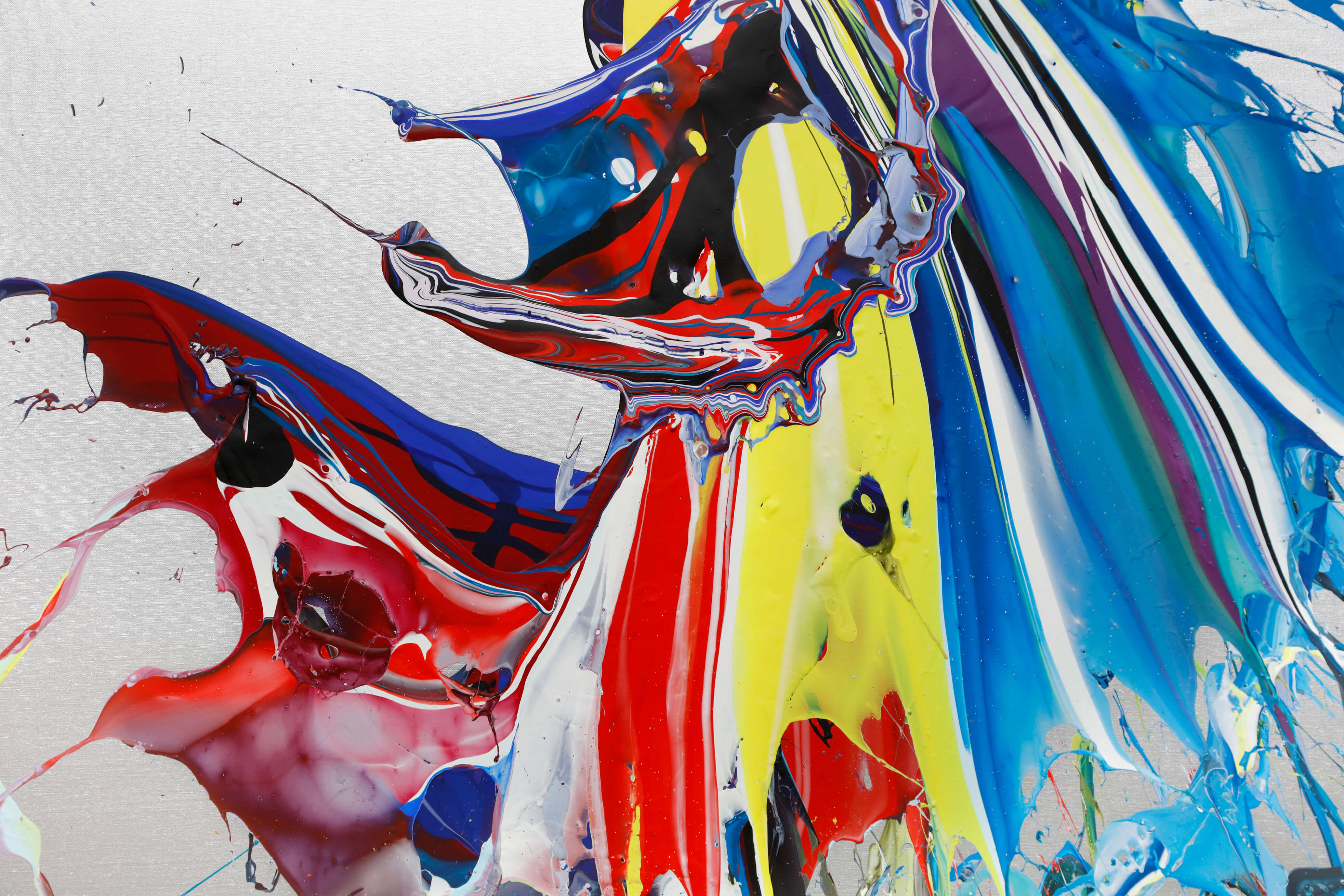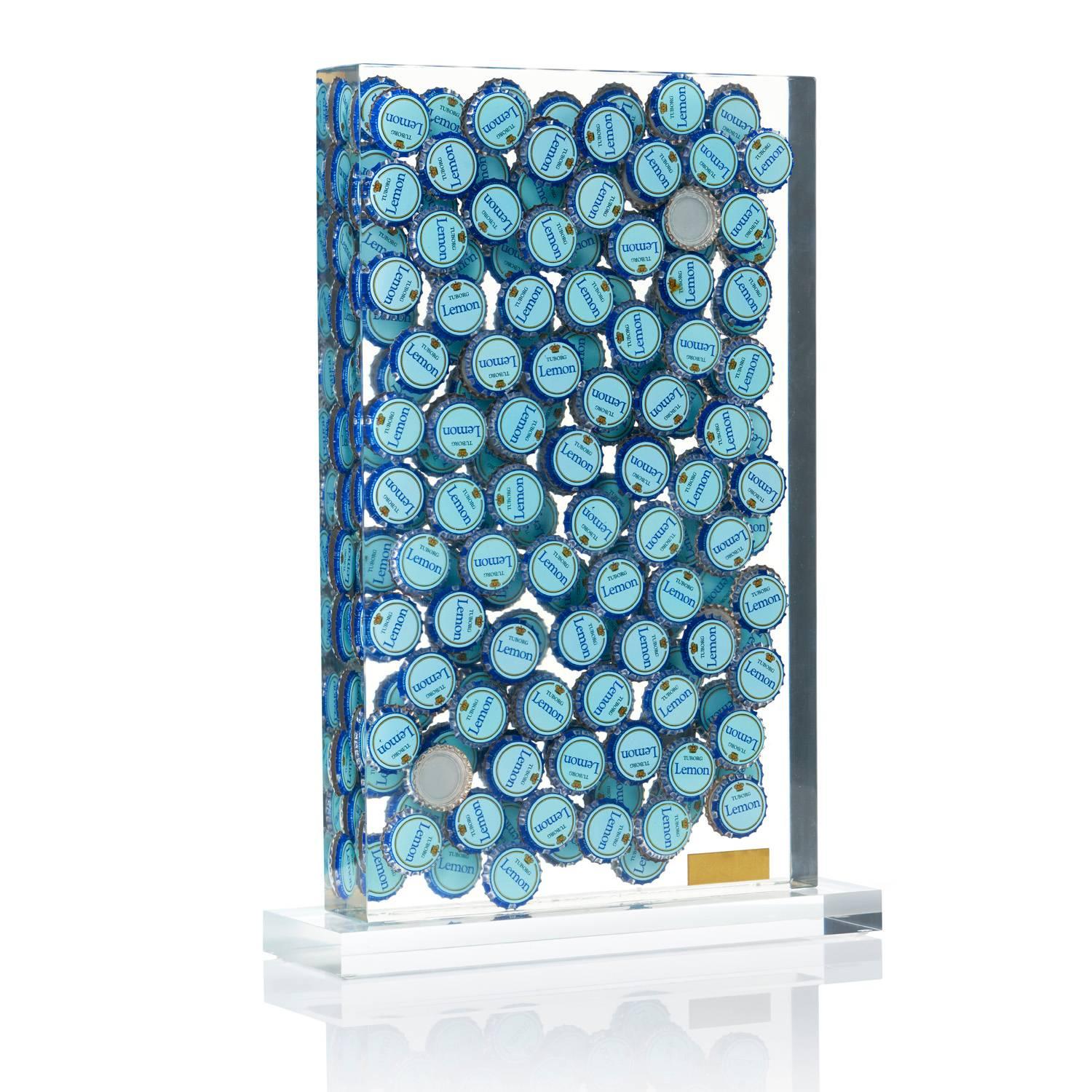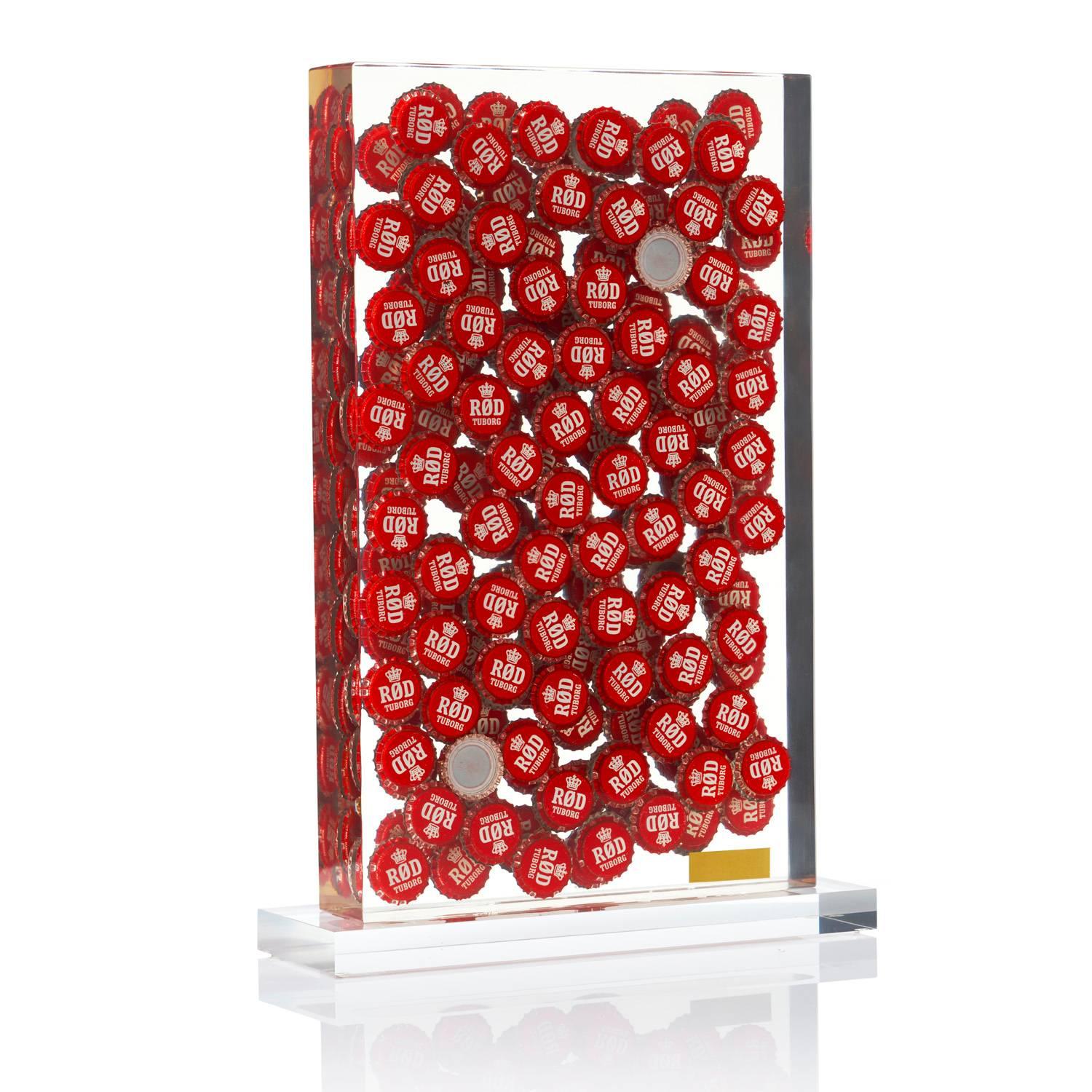Items Similar to YVES KLEIN L'OURS POMPON Limited sculpture includes COA IKB Contemporary Design
Want more images or videos?
Request additional images or videos from the seller
1 of 13
YVES KLEIN L'OURS POMPON Limited sculpture includes COA IKB Contemporary Design2022
2022
About the Item
L'OURS POMPON - EDITION YVES KLEIN
Date of creation: 2022
Medium: Artisanal resin and pigments
Edition: 999 (few numbers available, assigned randomly)
Size: Plexiglas bell size - 49 x 27 x 19 cm
Condition: New, inside its custom packaging
*NOTE* This sculpture ships with White Glove Delivery service. During transport, it will be handled exclusively by personnel specialized in shipping artworks. Due to its fragility, it cannot be shipped with conventional carriers.
This artisanal resin sculpture of 40 cm long is made after the original of François Pompon polar bear and finished with Yves Klein's blue. It belongs to a limited edition of 999. Includes a certificate of authenticity numbered, stamped with the publisher's seal and signed by the representatives of the rights holders of both Yves Klein and François Pompon. This sculpture has an individual certified number under the right rear flank leg. The Bear is fixed on a Plexiglas terrace and protected by a Plexiglas bell. It is sent inside its custom packaging.
There is a very small number of limited editions by these artists. This is an extraordinary opportunity to acquire a iconic piece that merges the work of two great masters, authorized by Yves Klein Archives Foundation and the François Pompon Association.
This piece has been crafted following François Pompon’s L’Ours blanc, a giant sculpture of a polar bear. Pompon’s idea of ripping off the details of his animal sculptures reduces the similarity with the model, reinterpreting the animal. Even though the result wasn't loyal to the image, it was capable of catching the flow of the moment, pose and texture. This giant polar bear was first shown at the Autumn Salon in Paris in 1922 and it was made of cast. The artist created this bear a few times more using different media, the most famous one created in stone can be seen at the D’Orsay Museum in Paris.
In 1954 Klein went to Édouard Adam’s atelier in Paris trying to find a medium that achieved the pureness of ultramarine blue pigment. It was Adam who developed that medium Yves Klein was searching for, which managed to respect the intensity and texture of the original pigment.
This sculpture is covered by Klein's blue, catching the same mat texture as the paint registered by the artist in 1960 under IKB (International Klein Blue) which he used in most of his works.
ABOUT THE ARTISTS
About Yves Klein:
Yves Klein was born on April 28, 1928 in the south of France and grew up near Nice. The son of Fred Klein and Marie Raymond, both painters, Yves Klein was a self-taught artist.
Klein's work is marked by three "milestones". His Monotone-Silence Symphony, his ultramarine blue monochrome paintings and his Leap into the Void. Growing up in a household whose parents were painters and hosted recurring artistic discussions with the attendance of other painters, made Klein want to overcome the barriers of conventional art and painting.
His desire to capture the void had certain avant-garde elements that were undoubtedly intended to lend the occasion an absurd touch. However, these aspects concealed a deeply serious reasoning. Klein spent most of his career searching for an aesthetic expression of “the emptiness". He delved into the concept of “the totality of things”, which by being so vast becomes empty, a quality similar to that of the sky or the ocean.
Based on this idea, Yves Klein freed color from the cage that the stroke represented through his monochrome canvases, which were initially of various colors, but were eventually simplified even further to the point that he would only produce them in what would become the famous IKB (International Klein Blue).
In 1962 he died suddenly, leaving behind an artistic legacy that would go down in the history of contemporary art.
To learn more about the work of Yves Klein, you can read this post.
About Françcois Pompon:
François Pompon was born on 9 May 1855, in Saulieu, in the French Burgundy. His father, a cabinetmaker, taught him his trade and found him his first job with a local marble worker, who taught him to carve stone before beginning his studies at the École des Beaux-Arts in Dijon. There he studied architecture and sculpture with François Dameron and the rudiments of engraving with Célestin Nanteuil.
In 1874, after being awarded a local prize, François Pompon moved to Paris where he kept learning and living by his trade. He settled in Rue Campagne-Premiére, in the Montparnasse district. During this period François Pompon established relationships with the promoters that were transforming Paris by the time of Napoleon III. This got him to perfect his technique by making decorative figures for the façades and caryatids of the Hôtel de Ville, which was burnt down during the Paris Commune. Meanwhile, in the afternoon he attended the Ecole Nationale des Arts Décoratifs, where he studied with Aimé Millet and Caillé and where Pompon met Pierre-Louis Rouillard, a sculptor of animal figures who was to become a great source of inspiration.
In 1882 he married Berthe Valain, who, like her mother, worked as a dressmaker. At this time he tried to be independent and to create his own work. Although his first large sculpture Cosette catch the eye of the jury of the Salon, a successful career as a sculptor still seemed to be far.
From 1896 Pompon began to collaborate a lot with Renée de Saint-Marceaux, a famous sculptor of the time. Pompon did this until Marceaux's death in 1915. With the pressure of his commercial activity, he rarely had enough time to sculpt the human face, although he left a few figures, including a portrait of his wife. During this period, François Pompon kept searching for his own style and the preference for sculpting in the open air played an important role. For this purpose he developed an ingenious mobile sculpture unit. His Grand Cerf (Large Deer) and Pelican sculptures date from this period.
His talent was discovered by Antonin Mercié, author of the Gloria Victis, whose assistant Pompon became before working for Alexandre Falguière and finally for Auguste Rodin. Three years after working with Rodin, he became head of the workshop, a post he held for the next 15 years.
His membership of the Bande à Schnegg, a group of sculptors linked to Rodin's workshop, also had a great influence. Collectively, they sought new stylized forms based on the monumental serenity of classical sculpture. In Pompon's work, form takes a second place after the light, which Pompon emphasized through a smooth finish of the surface. Unable to capture the whiteness that had so impressed him in a goose, Pompon played with the bird's reliefs, making them lose their depth and achieving a balance between color and shadows dictated by the light. "I like sculpture without hollows or shadows”.
During his time with Rodin, Pompon began to focus more and more on animal figures, although his work remained unappreciated and he went through a bad patch. It was not until 1919 that his work began to attract more interest. His recognition came at the age of 67 with his Ours Blanche (Polar Bear), which was exhibited at the Salon d'Automne in 1922. Le Taureau (The Bull), commissioned by the city of Paris, was his last work.
In his will, François Pompon donated his 300 works to the French state, which were first kept in the Pompon Museum at the Botanical Garden in Paris and then transferred to the Palais des Ducs de Bourgogne, where the Musée des Beaux-Arts in Dijon is located.
- Creation Year:2022
- Dimensions:Height: 10.63 in (27 cm)Width: 19.3 in (49 cm)Depth: 7.49 in (19 cm)
- Medium:
- Movement & Style:
- After:Yves Klein (1928 - 1962, French)
- Period:
- Condition:
- Gallery Location:Madrid, ES
- Reference Number:1stDibs: LU1033114141982

About the Seller
5.0
Vetted Seller
These experienced sellers undergo a comprehensive evaluation by our team of in-house experts.
Established in 2011
1stDibs seller since 2018
158 sales on 1stDibs
Typical response time: 3 hours
- ShippingRetrieving quote...Ships From: Madrid, Spain
- Return PolicyA return for this item may be initiated within 14 days of delivery.
More From This SellerView All
- Daniel Arsham CRYSTAL RELIC 003 Asahi Pentax Camera Modern Sculpture ConceptualBy Daniel ArshamLocated in Madrid, MadridDaniel Arsham - CRYSTAL RELIC 003 Date of creation: 2021 Medium: Sculpture made of cast resin Edition number: 445/500 Size: 11.43 × 13.97 × 17.7 cm Condition: Brand new, in mint cond...Category
2010s Modern Figurative Sculptures
MaterialsResin
- MARK RYDEN - YUKI THE YOUNG YAK (WHITE) Limited Surrealism Lowbrow Art DesignBy Mark RydenLocated in Madrid, MadridMARK RYDEN - YUKI THE YOUNG YAK (WHITE) Date of creation: 2022 Medium: Plush and rubber Edition: 500 Size: 43.20 x 30.50 x 25.4 cm Condition: Brand ...Category
2010s Surrealist Figurative Sculptures
MaterialsRubber
- Ryan Travis Christian - BIRDER, THE MAYOR & SHERM Vinyl Modern Black & WhiteBy Ryan Travis ChristianLocated in Madrid, MadridRyan Travis Christian - BIRDER, THE MAYOR & SHERM Date of creation: 2022 Medium: Vinyl and mixed media Edition: 300 Size: Birder: h190 x w130 x d215 mm, The Mayor: h260 x w110 x d110...Category
2010s Other Art Style Figurative Sculptures
MaterialsPlastic, Mixed Media
- BEARBRICK - JACKSON POLLOCK 400% & 100% Medicom Toy Japan Vinyl figure Pop ArtBy after Jean-Michel BasquiatLocated in Madrid, MadridBEARBRICK - JACKSON POLLOCK (V3) SPLASH 400% & 100% Date of creation: 2021 Medium: Vinyl figure Edition: Open Size: 28 x 10 x 10 cm Condition: In mint conditions, inside its original...Category
2010s Modern Figurative Sculptures
MaterialsPlastic
- Mark Ryden - BABY BOS - BLUSH. Limited Ed. Vinyl Figure Surrealism Lowbrow PinkBy Mark RydenLocated in Madrid, MadridMark Ryden - BABY BOS - BLUSH Date of creation: 2022 Medium: Vinyl figure Edition: 500 Size: 15.25 cm height Condition: In mint conditions, brand new inside its original package Desc...Category
2010s Other Art Style Figurative Sculptures
MaterialsPlastic
- Daniel Arsham FUTURE RELIC 07 CASSETTE PLAYER Limited Sculpture Sony Walkman 90sBy Daniel ArshamLocated in Madrid, MadridDaniel Arsham - FUTURE RELIC 07 - CASSETTE PLAYER Date of creation: 2017 Medium: Plaster and crushed glass Edition number: 476/500 Size: 12.7 × 14.6 × 14 cm Condition: In mint condi...Category
2010s Modern Figurative Sculptures
MaterialsGlass, Plaster
You May Also Like
- Spiraling “No”, Jim PallasLocated in Fairfield, CTArtist: Jim Pallas (1941) Title: Spiraling “No” Year: 2023 Medium: Pigmented Epoxy on urethane foam, iron wire, base of steel and concrete Size: 21 x 4 x 3 inches Condition: Excellen...Category
2010s Contemporary Figurative Sculptures
MaterialsEpoxy Resin, Foam, Pigment, Polyurethane
- Bon SantéBy ArmanLocated in Malmo, SEPublisher GKM. Limited Edition 30 ex. Free shipment worldwide. Acquired directly from the artist. Arman explores reality. He strives to transform and sublimate artefacts into works ...Category
1990s Contemporary Figurative Sculptures
MaterialsEpoxy Resin, Plexiglass
- Bon SantéBy ArmanLocated in Malmo, SEPublisher GKM. Limited Edition 11/30 ex. Free shipment worldwide. Acquired directly from the artist. Arman explores reality. He strives to transform and sublimate artefacts into wor...Category
1990s Contemporary Figurative Sculptures
MaterialsPlexiglass, Epoxy Resin
- Bon SantéBy ArmanLocated in Malmo, SEPublisher GKM. Limited Edition 11/30 ex. Free shipment worldwide. Acquired directly from the artist. Arman explores reality. He strives to transform and sublimate artefacts into ...Category
1990s Contemporary Figurative Sculptures
MaterialsEpoxy Resin, Plexiglass
- Bon SantéBy ArmanLocated in Malmo, SEPublisher GKM. Limited Edition 30 ex. Free shipment worldwide. Acquired directly from the artist. Arman explores reality. He strives to transform and sublimate artefacts into works ...Category
1990s Contemporary Figurative Sculptures
MaterialsEpoxy Resin, Plexiglass
- Battleship (Ed. 86/200)Located in Dallas, TX“I’m completely fascinated by liquid mercury, so I decided to create a series around it and it’s kind of amazing stuff. We’ve created them into these extraordinary sculptures which w...Category
21st Century and Contemporary Contemporary Abstract Sculptures
MaterialsResin, Plexiglass





